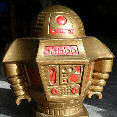 |
Matronics Email Lists
Web Forum Interface to the Matronics Email Lists
|
| View previous topic :: View next topic |
| Author |
Message |
dean.psiropoulos(at)veriz
Guest
|
 Posted: Sun Nov 05, 2006 9:20 pm Post subject: Sheild pigtails. Posted: Sun Nov 05, 2006 9:20 pm Post subject: Sheild pigtails. |
 |
|
How does one use the little pigtails that are designed to bring the shield
of a coax cable out to a wire? The ones I have are from Steinair and have a
special clear heatshrink with a metal ring in the center and a small wire
under the heatshrink and ring that can be attached to a terminal or pin. I
slid the whole works over a stripped coax shield and put a heatgun on it.
The sleeve shrank around the coax just fine but the ring was a bit larger
than the shield and didn't melt like I expected (someone told me it was
solder ring that would melt around the shield and the pigtail wire). Is this
true? Or am I supposed to crimp the metal ring before shrinking the
shrinkwrap. Or what......?????????????? Thanks.
Dean Psiropoulos
RV-6A N197DM
Finishing up wiring.
| | - The Matronics AeroElectric-List Email Forum - | | | Use the List Feature Navigator to browse the many List utilities available such as the Email Subscriptions page, Archive Search & Download, 7-Day Browse, Chat, FAQ, Photoshare, and much more:
http://www.matronics.com/Navigator?AeroElectric-List |
|
|
|
| Back to top |
|
 |
Eric M. Jones

Joined: 10 Jan 2006
Posts: 565
Location: Massachusetts
|
 Posted: Mon Nov 06, 2006 6:28 am Post subject: Re: Shield pigtails. Posted: Mon Nov 06, 2006 6:28 am Post subject: Re: Shield pigtails. |
 |
|
See: http://www.emcesd.com/semdemos.htm
Here is a demonstration of a 5V square wave where the pigtail develops 1.5V across it. At pretty low frequencies too. At high frequencies...your signal has vanished into the ether.
The problem is that the reduction of the shield to a pigtail wrecks all the nice electrical characteristics that you paid for by using coaxial cable, by introducing an inductance.
Proper termination of coaxial shields involves much more than twisting the shield into a "pigtail"--it involves coupling the shield to the ground or other other conductor with an inductance that is equal to- or lower than- the coax shield.
So "pigtails" are for pigs. Let's keep it that way and learn how to do it right.
"Every act of conscious learning requires the willingness to suffer an
injury to one's self-esteem...."
-Thomas Szasz
| | - The Matronics AeroElectric-List Email Forum - | | | Use the List Feature Navigator to browse the many List utilities available such as the Email Subscriptions page, Archive Search & Download, 7-Day Browse, Chat, FAQ, Photoshare, and much more:
http://www.matronics.com/Navigator?AeroElectric-List |
|
_________________
Eric M. Jones
www.PerihelionDesign.com
113 Brentwood Drive
Southbridge, MA 01550
(508) 764-2072
emjones(at)charter.net |
|
| Back to top |
|
 |
nuckollsr(at)cox.net
Guest
|
 Posted: Mon Nov 06, 2006 6:53 am Post subject: Sheild pigtails. Posted: Mon Nov 06, 2006 6:53 am Post subject: Sheild pigtails. |
 |
|
At 12:18 AM 11/6/2006 -0500, you wrote:
| Quote: |
<dean.psiropoulos(at)verizon.net>
How does one use the little pigtails that are designed to bring the shield
of a coax cable out to a wire? The ones I have are from Steinair and have a
special clear heatshrink with a metal ring in the center and a small wire
under the heatshrink and ring that can be attached to a terminal or pin. I
slid the whole works over a stripped coax shield and put a heatgun on it.
The sleeve shrank around the coax just fine but the ring was a bit larger
than the shield and didn't melt like I expected (someone told me it was
solder ring that would melt around the shield and the pigtail wire). Is this
true? Or am I supposed to crimp the metal ring before shrinking the
shrinkwrap. Or what......?????????????? Thanks.
|
These are "Soldersleves" by Tyco/Raychem. They come in a variety
of formats. Their use is illustrated in the last frame of an
article at: http://aeroelectric.com/articles/pigtail/pigtail.html
The devices are described in part in documents at:
http://www.aeroelectric.com/Mfgr_Data/Misc/Raychem-Tyco
The problem you're having suggests that your heatgun output
is too cold and/or insufficiently concentrated on the length
of the sleeve.
My personal favorite gun right now is by Milwaukee and is similar
to the one shown at:
http://www.toolfetch.com/Category/Power_Tools/Heat_Guns/8975-6.htm
There are over 200 listings for heat guns on ebay right now.
Avoid the Milwaukee 1400 . . . looks cool, but only 300 watts.
Dual heat guns are handy, variable heat guns are better.
Bob . . .
---------------------------------------------------------
< What is so wonderful about scientific truth...is that >
< the authority which determines whether there can be >
< debate or not does not reside in some fraternity of >
< scientists; nor is it divine. The authority rests >
< with experiment. >
< --Lawrence M. Krauss >
---------------------------------------------------------
| | - The Matronics AeroElectric-List Email Forum - | | | Use the List Feature Navigator to browse the many List utilities available such as the Email Subscriptions page, Archive Search & Download, 7-Day Browse, Chat, FAQ, Photoshare, and much more:
http://www.matronics.com/Navigator?AeroElectric-List |
|
|
|
| Back to top |
|
 |
|
|
You cannot post new topics in this forum
You cannot reply to topics in this forum
You cannot edit your posts in this forum
You cannot delete your posts in this forum
You cannot vote in polls in this forum
You cannot attach files in this forum
You can download files in this forum
|
Powered by phpBB © 2001, 2005 phpBB Group
|


